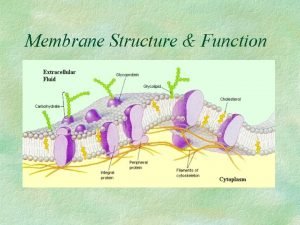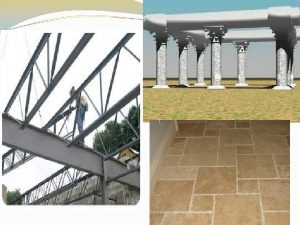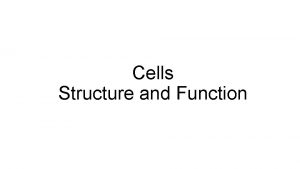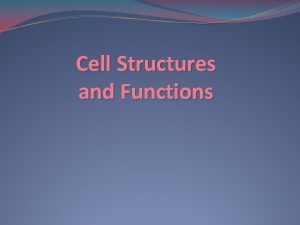Cell Wall and Its Function A cell wall











- Slides: 11

Cell Wall and It’s Function

A cell wall is a non-living, tough, flexible and sometimes fairly rigid layer that surrounds the cell. It is located outside the cell membrane and provides these cells with structural support and protection, and also acts as a filtering mechanism. The presence of a cell wall distinguishes plant cells from animal cells.

Functions of Cell wall: § Prevents enlargement of the plant cell. § Play important roles in the absorption, transport and secretion of substances in plants. § Provide the plant cell a definite shape and size to give strength and rigidity to the cell. § Provides protection from physical injury. § Together with vacuole, provides skeletal support.

Components of the Cell Wall The cell wall is chiefly composed of insoluble polysaccharides. The most common constituent is cellulose. Certain other polysaccharides like pectin, hemicellulose, lignin and xylan may also be present. Cellulose is made of repeating molecules of glucose attached end to end in a b(1 -4) linkage.


Up to three layers may be found in plant cell walls: The middle lamella o Layer rich in pectins. This outermost layer forming the interface between adjacent plant cells and glues them together. o When the primary cell wall are developing, the substance of the cell plate becomes as firm intercellular layer, that binds the cells together.

The primary cell wall o Generally a thin, flexible and extensible layer formed while the cell is growing. o In the primary cell wall pectic substances accompany the cellulose and hemicellulose in early stages. o The primary wall usually consists of a single layer. As cell enlargement begins, this membrane may become unevenly thickened. Here primary pit field or primordial pit may be formed.

o The young cell wall remains plastic and adaptable to changing volume. With the attainment of the final cell size, the primary cell wall takes on mature structure. Plasmodesmata: protoplasmic connections between two adjacent cells, separated by the cell wall.

The secondary cell wall o A thick layer formed inside the primary cell wall after the cell is fully grown. It is not found in all cell types. o The secondary cell wall is made up of one to many layers, most frequently three. o It is incapable of increase in area. o Secondary wall is mainly compose of cellulose or both the cellulose and hemicellulose. o In some cells (such as xylem), the secondary cell wall contains lignin, which strengthens and waterproofs the wall. o Cutin, suberin, tannin, oils and inorganic salts may also be found here.


These long and thin cellulose molecules are united into a "Micro fibril". These micro fibrils are arranged in a very regular, ordered arrangement and because of this they exhibit almost "crystalline" properties. The micro fibrils form fine threads which may coil around one another like a cable. Each "cable" is called a "Macrofibril".
 What is the function of a cell
What is the function of a cell Cell wall cell membrane
Cell wall cell membrane A tissues
A tissues Transport
Transport Cell wall function
Cell wall function Golgi apparatus nickname
Golgi apparatus nickname The emigree structure
The emigree structure Its halloween its halloween the moon is full and bright
Its halloween its halloween the moon is full and bright Mary dahlgren sound walls
Mary dahlgren sound walls Wall to wall chris brown
Wall to wall chris brown Cut brick lengthwise
Cut brick lengthwise Members used to carry wall loads over wall openings
Members used to carry wall loads over wall openings





















